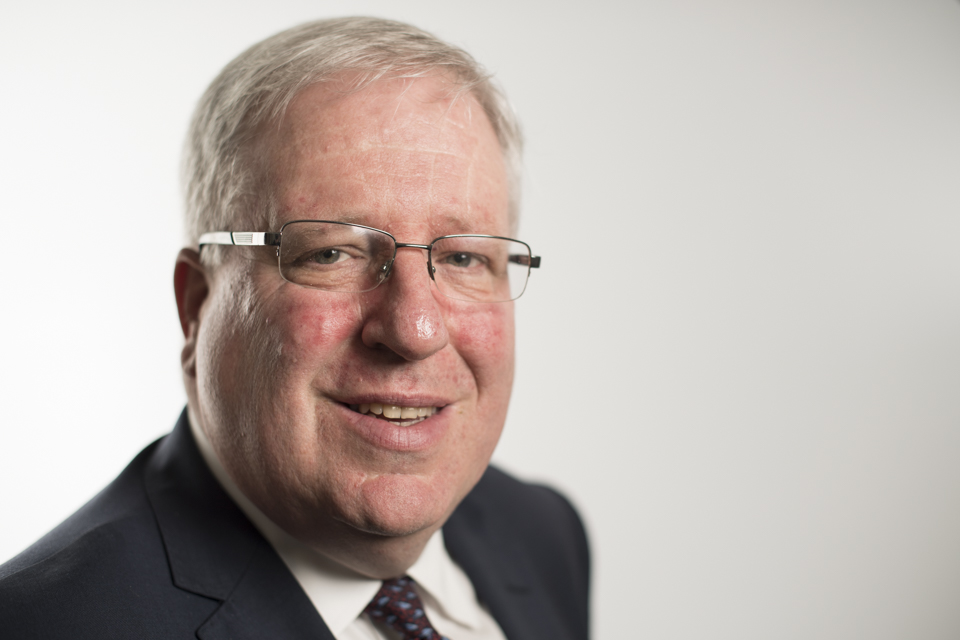Launch of the Independent Transport Commission's HS2 report
Welcomes the publication of the Independent Transport Commission's 'Ambitions and opportunities' report into HS2.

Thank you.
It is 4 and a half years since this government set out plans to build HS2.
It is the flagship scheme in a much wider programme of transport investment.
Which will be worth £73 billion between 2015 and 2021 alone.
We are modernising our transport infrastructure not just to tackle congestion and overcrowding.
And not just to make journeys reliable once again.
We’re making the biggest investment in transport for generations.
Because we know transport is an engine for growth and opportunity.
And that’s certainly true of HS2.
We’ve made huge progress since 2010.
We made the case for the new line.
Around capacity, better connections and economic growth.
And we’ve passed the major milestone for the HS2 programme when the House of Commons approved the hybrid Bill on the principle of high speed 2 and the route from London to the West Midlands, at second reading.
Over this time, the debate over high speed rail has moved on too.
From whether we build HS2.
To how we build it.
Subject to Royal Assent, construction of HS2 starts in just 3 years’ time.
So our focus now is how to get the very best results from our investment.
That’s why I welcome this timely report from the ITC.
We’ve built up some useful experience delivering big infrastructure in recent years.
St Pancras. King’s Cross. Heathrow Terminal 5. The London Olympics.
But this is on a different scale.
High Speed 2 (HS2) is the biggest infrastructure investment in the UK for a generation.
So we’re keen to make sure we learn every possible lesson.
Not just from HS1, here in the UK but also from other countries who have invested in high speed rail.
The ITC has rigorously examined high speed rail projects on the Continent.
And the experiences of cities like Lille, Rotterdam, and Antwerp can only help us in the UK as we further develop our high speed rail plans.
I’m particularly pleased that the report’s conclusions are similar to those of the HS2 Growth Taskforce.
Both emphasise the need for close engagement between central and local government.
The need for early decision making.
The importance of integrating high speed with the rest of the transport network.
And the need for cities and regions with HS2 stations to show leadership.
In developing their own plans for economic regeneration.
Last week I was in Birmingham.
Where I was impressed to see plans to regenerate the areas around Curzon Street and Solihull HS2 stations.
The Curzon Street programme alone is expected to create 14,000 jobs and 4,000 homes.
I’m sure this report will be of great interest to the partnerships working in Birmingham.
And in the other proposed station cities.
Where they are looking to maximise the benefits of HS2 in terms of transport connectivity and the opportunities it brings.
I was pleased to see that the report doesn’t just highlight best practice abroad.
It celebrates the successes we’ve had here.
Particularly with the regeneration of King’s Cross.
And will help provide a model for the rest of the HS2 programme.
That in turn, will influence the next stage of the high speed journey.
As the Prime Minister announced, we are already looking at HS3.
An east-west line joining up the great cities of the north.
From Liverpool to Hull.
And also the potential for extending the high speed network north of Leeds and Manchester to Scotland.
So can I thank the ITC for producing this excellent report.
It comes at a crucial time for HS2.
A time of real momentum.
Of changing priorities.
As the bill completes its journey through Parliament.
As we move from planning to procurement.
And as we start thinking about delivery.
I’m sure it’s going to be a valuable source of information and inspiration.
To everyone working on this amazing project.
Thank you.
Related ITC documents
- Ambitions and opportunities: understanding the spatial effects of High Speed Rail (PDF, 15MB), published
- International research establishes regeneration and transport benefits of high-speed rail (PDF, 477KB), press notice published 20 November 2014